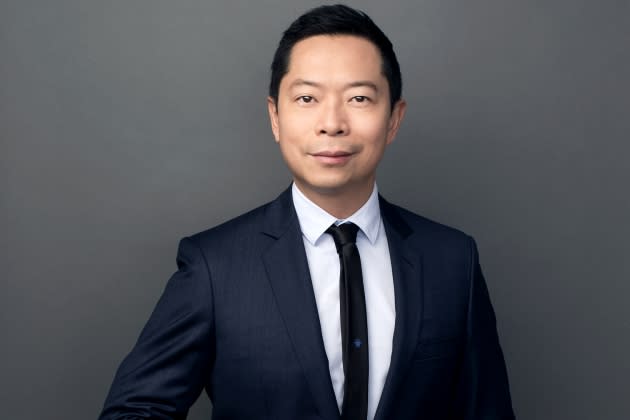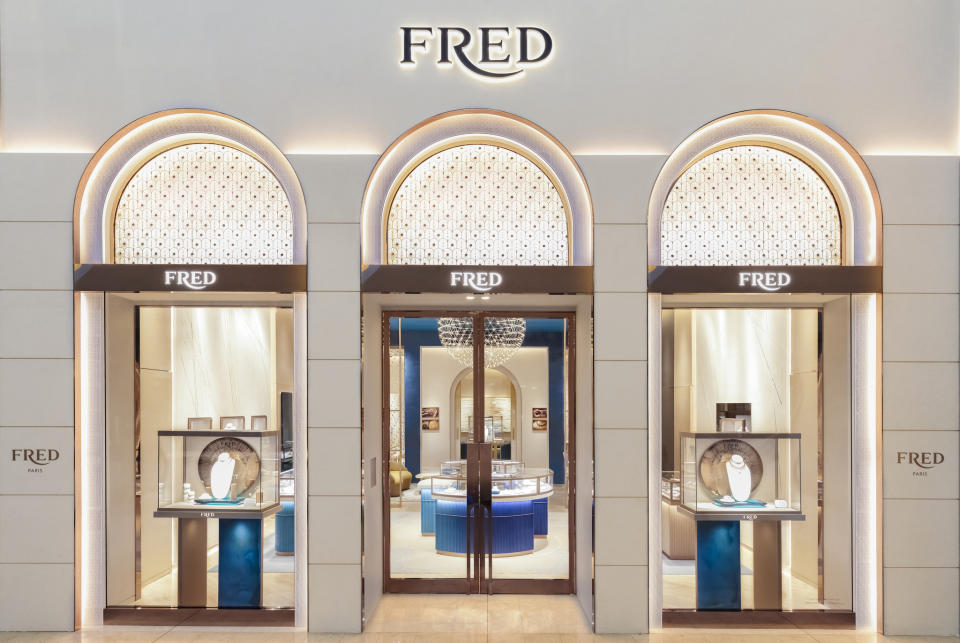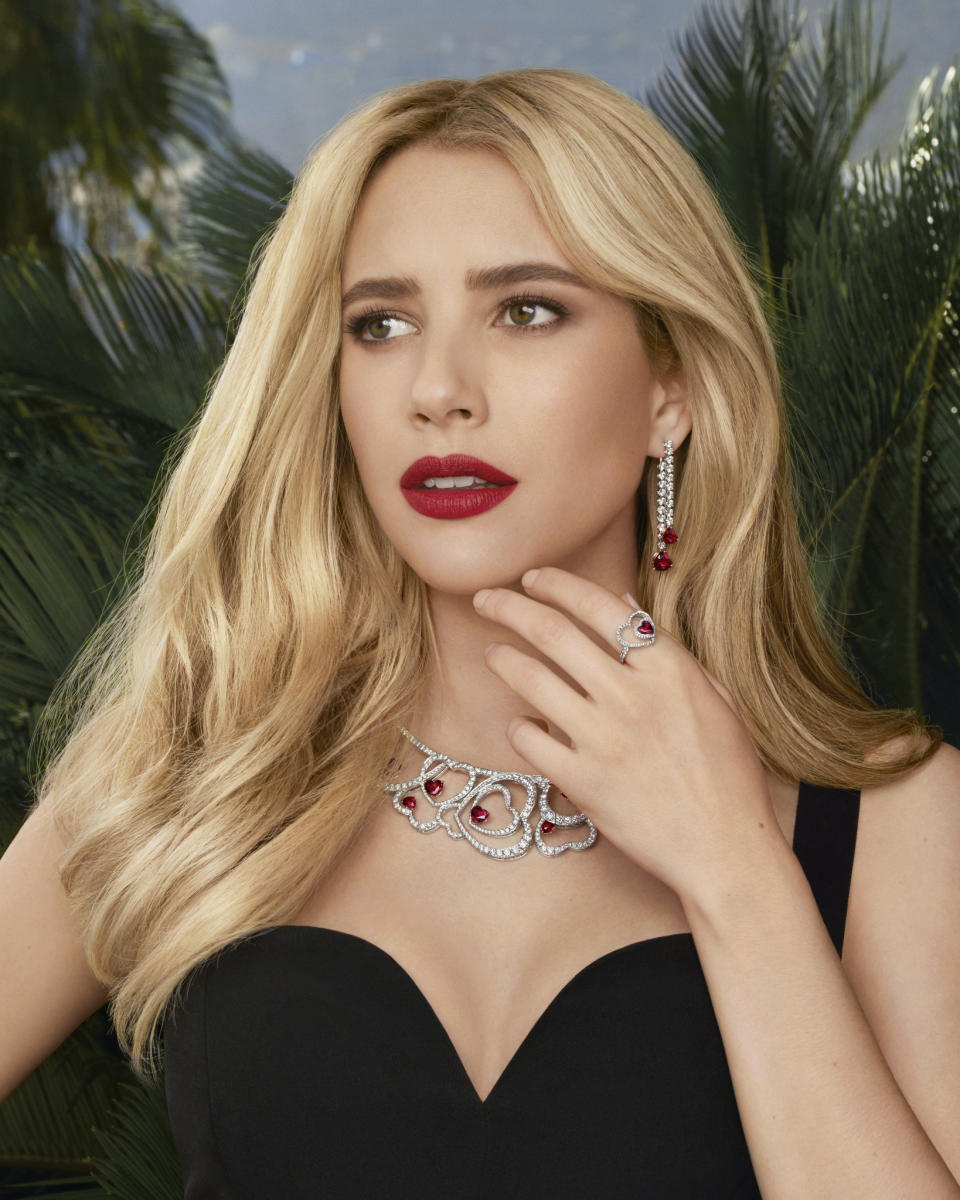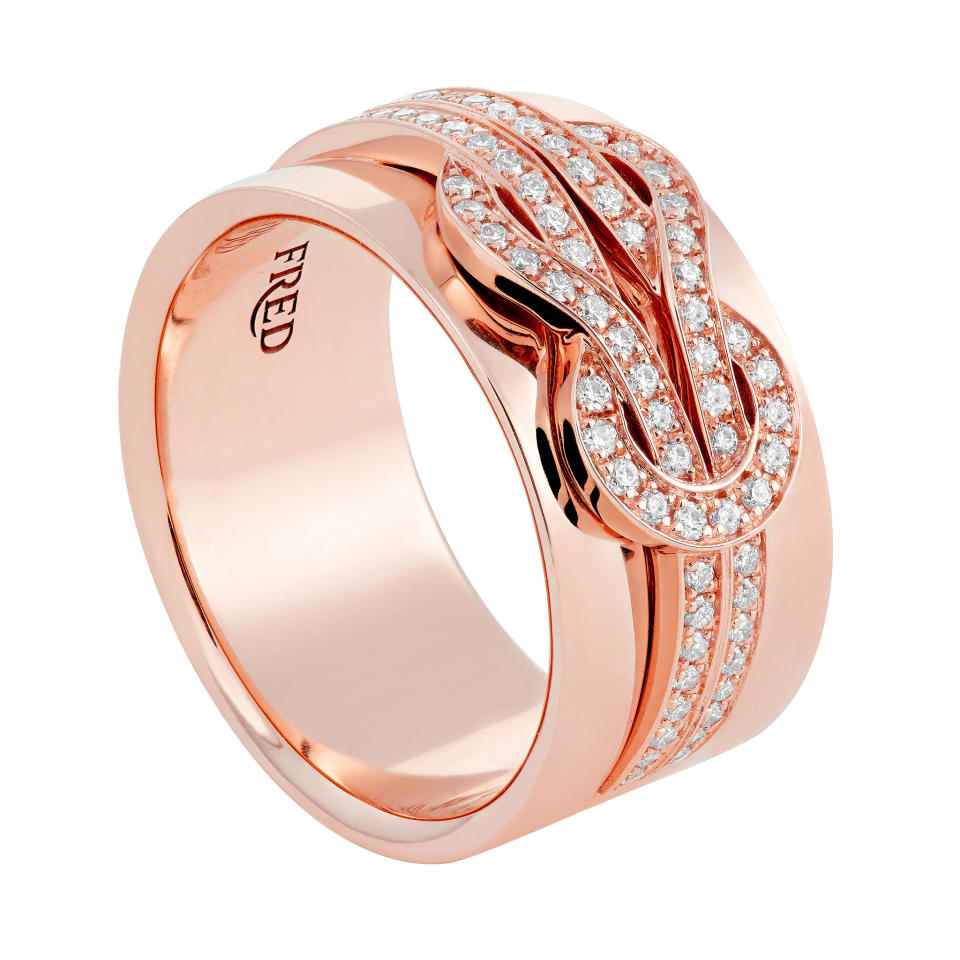Fred CEO Charles Leung Talks Finding Joy, Talent and Local Customers

As any sailing enthusiast knows, there is never a guarantee for smooth seas or sunny conditions when going out on the water. “But with a bit of faith and a bit of determination, as well as some luck, you can sail through,” said Charles Leung, the chief executive officer of LVMH Moët Hennessy Louis Vuitton-owned jeweler Fred.
He was talking about house founder Fred Samuel and his sons, keen sportsmen all, but he might as well have been speaking about his experience at the helm of the French jeweler. Appointed in late 2018, Leung has spent two of his three years at the house navigating the uncertain and changing conditions of the COVID-19 pandemic.
More from WWD
By all accounts, Leung has steered well. Mario Ortelli, managing partner of advisory company Ortelli & Co., lauded the smart combination of “product innovation, digital communication and a compelling price point that resonated well a younger consumer base.”

Courtesy of Fred
Despite its modest size — industry sources placed its turnover in the region of $100 million for 2020 — in a category dominated by the likes of Cartier, Van Cleef & Arpel’s and Tiffany & Co., Fred is understood to be one of the houses with a solid growth rate nearing 20 percent, outstripping the overall growth of LVMH’s watches and jewelry division, which does not publish figures for individual houses.
The region is a particular area of satisfaction for the brand, with Asia-based consumers accounting for close to 50 percent of its revenue, be it in more mature markets like Korea and Japan, or with nascent consumer groups like China, Malaysia or Vietnam.
On long-game issues Leung also wants to have an impact. Keenly aware of the expectations placed on someone touted as the first Asian CEO in the industry, he’s reviewing practices across the board, from packaging and lighting for the stores to the creation of an in-house committee that takes on board staff-imagined initiatives on inclusion and diversity.
Ahead of the opening of the French jeweler’s first store in the Middle East, located in the Dubai Mall, Leung spoke about the house’s links to the French Riviera, what the sweet spot is for a brand looking to Asia and his way of working toward equality.
WWD: What is the new store concept making its debut in Dubai?
Charles Leung: Since I arrived as chief executive in late 2018, the mission has been to elevate the brand and working on its desirability. This opening in Dubai fulfills a number of strategic objectives, in particular to reach a new clientele in the Middle East, where we have not been present for many, many years. Yet beyond that, we wanted to tell the story of our founder Fred Samuel. Through this new [store concept], we are expressing this connection to the French Riviera, both by working with artisans from southern France for interior elements such as counters, wallpapers or decorative objects — there is even a mosaic of a Mediterranean sunset in our VIP salon — and by commissioning our good friend, artist Vincent Darré, to create a mural for the store. If you visit the store, you’ll see this great long painting of Mr. Fred sailing in [the southern French city of] Nice, with a backdrop featuring the Promenade des Anglais and the Hotel Negresco, where he liked to have a drink. There’s a famous photograph of him posing in front of that hotel. This is to remind everyone of our love for the French Riviera.
WWD: Is this a signal that you’re shifting your focus toward the Middle East, after building a successful Asian business despite the pandemic?
C.L.: We already had customers from the Middle East buying in Paris, in the Southern France and in London. So it was about time we came closer to them. An important point is the pandemic, which meant that entire regions like Asia or the Middle East were not traveling and consumed locally making their local markets boom like crazy. For us, France was booming throughout the pandemic and, in fact, we had never sold as much to the French customer who went strongly for the Force 10 and Chance Infinie lines.

Courtesy of Fred
WWD: How is the trajectory beyond 2021?
C.L.: We are on an even better trend. Many brands, even those who had great figures this year, may not be able to recover [the levels of] 2019, be it in sales or in bottom-line profits. We are one of the rare houses that did better than in 2019, with 2020 being the biggest ever year in our history. So 2021 was a huge jump — a very big double [digit]. The branded jewelry market is enjoying a strong growth since earlier this year, and is tipped to seduce even more new young clients into the category. The task for Fred is to emphasize its uniqueness in the fine jewelry segment, and its relevance to this post-COVID-19 world and local clients.
WWD: What accounts for these good results in the less-than-ideal circumstances of a pandemic?
C.L.: [Having] an exceptional dedicated and multitalented team. What is great is that the whole branded jewelry industry is growing. We are still a small part of the whole jewelry industry and we are all fighting to convert customers. After the pandemic, priorities will have shifted and so will consumption habits. The key for a brand like ours is to see how to be relevant and adapt to this new reality. For us, it meant recognizing that it’s about celebrating the big and small moments in life. It’s about sharing joy, not waiting to your wedding day or having to meet Queen Elizabeth. Buying jewelry should be about the good times or telling someone you love them in your own way.
WWD: Another major shift is digital. What are the developments there?
C.L.: Digital is very much enmeshed in our daily lives, with the boundaries increasingly blurred between online and offline. It’s a very important part of the Fred customer’s journey. What we are investing in is making those touch points — searching, online shopping, customer experience — more relevant and efficient. I still believe there is a certain magic to going to a physical store, to touch and try, get advice or share a moment — all experiences difficult to replicate online. But at the end, the transaction itself can be done online, at whatever moment is convenient for you. A revamp of our website and e-commerce platform will be completed by the first half of 2022.
WWD: There were 10 store openings planned for 2021. Was that number reviewed due to the pandemic?
C.L.: With Singapore scheduled to open in December, we have managed to reach that target. Like everyone else, in every industry, our main challenge has been the worldwide supply chain issue, particularly for the stores due to open in the second half or the last quarter of the year. The way forward is to be flexible and understanding, because we are facing something so unprecedented.
WWD: Will you keep up this pace of opening for 2022?
C.L.: We will open at least eight shops around the world. So far, five are planned in mainland China, one in South Korea, one in Malaysia, and given the strong performance of our new store in Dubai, we are working to have a second store in the Middle East region. We are in talks with different malls, and the exact timing of the openings will depend on the availability of the target locations. All in all, this will bring our total physical stores to 65 worldwide; compared to fewer than 40 three years ago.
Now that the new store concept has been [revealed], an upgrading exercise to the existing stores will be rolled out. The idea is to improve the shopping experience by adapting this concept to different major cities, especially those at the smaller department store shop-in-shop format in Japan and in South Korea. Throughout these retail projects, our overall commitment in sustainability remains. Fred has one of the lowest energy consumption indexes within the luxury industry and nearly half less compared with other jewelry brands.
WWD: How is the Asian region going? Can it sustain the growth rate you’ve had since entering the market?
C.L.: There are still a lot of new customers for us. In China, we are still pretty new and there are a lot of cities where we are not present. A number of brands, including some I worked for previously, came to the market in the early 1990s and have a network of 50 or 60 stores. And increasingly, Chinese customers are shopping locally, which doesn’t mean traveling to Beijing or Shanghai but turning to retail in their local city.
The middle class in those cities is now large enough to sustain a meaningful luxury industry locally. Add to that the fact that travel, even within China, may continue to be challenging, especially as COVID-19 cases crop up…people are more interested in discovering things closer to them than traveling any distance. It will therefore be interesting for us to explore some of the larger second-tier city with a big young middle-class population. As for cities where we have already developed a presence, we have found that customers are buying more and more high-end pieces from us, which means that the more they get to know us, the more confident they are in investing in those items.

Courtesy of Fred
WWD: What is the most attractive aspect of the brand to them?
C.L.: What we hear is that Fred is fresh and different — staying away from the bridal narrative. A lot of branded jewelry in China is benefiting from customers getting married. But we see that jewelry has become more of a lifestyle product. Our positioning and image of the brand is younger, with a strong message about courage, determination and luck. That speaks to a [coed] clientele who is interested in showing their style without getting into emotional and sentimental storytelling about themselves.
WWD: Does that mean you’re also keen to woo a male customer?
C.L.: When I arrived at Fred, I found something quite extraordinary: men are not afraid to come in store to try the Force 10 bracelet. Neither are women. Retail is about making your shoppers at ease and comfortable about coming to you. To have a customer coming in casually is the most difficult thing to achieve in jewelry and Fred has this magical touch that makes people relaxed. In addition, there are so few jewelers who are legitimate in that market. For starters, our founder was a man who was sporty and stylish. Were he alive today, he could be a KOL [key opinion leader]. In France and Japan, half of the sales of the Force 10 line already come from men — and with no connection to getting married. To persuade customers to purchase their first piece of fine jewelry without thinking of engaging with another human being is already a very big achievement. This is [an angle] we should work more and contribute to the happiness of our young customers.
WWD: Would you say that Fred is closer to the watch industry in that respect?
C.L.: Many customers are wearing their favorite timepieces with a Fred bracelet. [On social media,] you type in any watch brand name and you can find countless pictures of these combinations. Fred also produced its own watches in the ’70s to ’90s, but stopped after that. But we have no plans to go back into that space.
WWD: Heritage is also front and center in your upcoming “Fred Cherche Fred” initiative…
C.L.: A year ago, Valérie Samuel, who is vice president, artistic director and granddaughter of the founder, and I started a full inventory of 1,000 boxes that spent 20 years in a warehouse near Paris. We found more than 4,500 drawings, 6,000 photographs and hundreds of catalogues, advertisements; files from the boutiques in places like Beverly Hills or Saint-Tropez, and letters from renowned clients, all documents that retrace how our founder and his family built the brand.
Since we have never told the story of the brand and its founder in our 85 years of existence, we are working on the first-ever retrospective exhibition, to be hosted in Paris in the second half of 2022, to pay tribute to the extraordinary vision and art of the maison’s founder Fred Samuel. And he is quite well remembered in Paris, including by executives who met him when they began their careers, so we can’t go about inventing things.
WWD: Is high jewelry a field you’re looking to develop?
C.L.: Definitely. The Pretty Woman collection was warmly received. Now that we are speaking more about our heritage as a jeweler and the larger pieces we once made, we have been getting more requests to go in that direction. But the question I ask myself is “what is our style of high jewelry?” The answer lies in our Riviera style, which means pieces that are easy to wear and joyful, as you can see in our current campaigns.
[What we will be going for is] a more modern way of wearing jewelry than a piece you wear once for your wedding and that’s it. So expect beautiful, transformable designs that can be useful for different occasions — to the beach, to a party, to wherever you like — and fit for a younger clientele. Ultimately it’s not about age but about making sure the style fits the customer’s expectation. Take men: we’re seeing that they’re more and more interested in more stones and more expensive craftsmanship.
WWD: Are you planning on naming a global ambassador after Emma Roberts?
C.L.: That’s a complex question because we are one world but are facing different markets with diverse clients and cultures. What is important is to make sure the client understands the values behind the brand and that these values be relevant to them. Emma embodied the way the spirit of a movie like “Pretty Woman” is still there but can be interpreted in a fresh way. Before her, we had not had a global ambassador for over 10 years.
On markets that are more receptive to local celebrities, it’s important to find a star that illustrates them and has the kind of lifestyle [portrayed by the brand]. They are also a risk — if the face of the brand is involved in a scandal, a brand has to react very fast because the public look up to us to have a moral standing.
WWD: You became the first Asian CEO of a French jewelry house. How are you making the brand more inclusive and diverse?
C.L.: I’m very conscious of my “special status” and I always ask myself what is expected of me, not only on race but in every aspect. For example, there will be a new advertising campaign, reinforcing our “Live the Joy” spirit and the meaningfulness of our three pillar collections, Force 10, Chance Infinie and Pretty Woman, [where] I am committed to bringing more diversity and inclusion.
In terms of gender equality, our executive committee now has more women than men. We are proud of this but that wasn’t intentional. Simply put, the best candidates for each position happened to be women.
And that’s the first thing to do when you want to be inclusive: include every talent, regardless of their race, gender or background. Don’t think in terms of percentage. Just consider performance and be factual about recruitment, retention and promotion. Then it will happen naturally. I’ve been in multicultural environments before and I know how it is not to be considered fairly.
Sign up for WWD's Newsletter. For the latest news, follow us on Twitter, Facebook, and Instagram.

